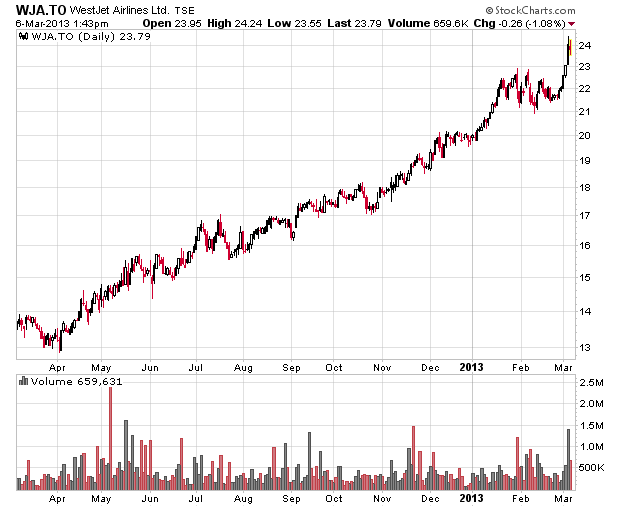A tale of market timing…
Air Canada (TSX: AC) was going to buy out Air Transat (TSX: TRZ) for $18/share, but of course COVID-19 hit. They will instead do so for $5/share, and also with shares instead of cash (the details of this were not clear from the press release, but a typical provision is for people to elect to take cash up to a certain aggregate amount and after they will receive cash). The shares option has Air Canada equity valued at a level that is higher than Friday’s closing trading price.
Financially, Transat is not in terrible condition, with a whole bunch of cash and equivalents that are paid in the form of customer deposits (good luck getting those ticket refunds, customers!). They are still bleeding cash by virtue of their revenues going down to nearly nothing, but Air Canada is striking while the iron is hot (or rather, while the Covid craze is hot) and removing a future source of competition. The implied value in international ticket pricing they will gain will probably be a lot higher than the immediate costs of the costs they are paying.
We contrast this with Onex’s acquisition of Westjet, which closed in December 2019 for $31/share in cash (or $5 billion, debt included). Air Canada’s equity took a 3/4 haircut after Covid, and there wouldn’t be much reason to believe that Westjet would have fared any better had they still been public. Onex is a huge entity so their financial solvency is nowhere threatened, but still, they probably took an implied $3 billion haircut if they were to float Westjet to the public again.
This, and also an examination of Cineplex’s proposed takeover (at CAD$34/share), goes to show you that timing is everything.
I don’t buy airlines, nor do I particularly care for the sector as a whole. Almost everything associated with the retail side of commercial aviation is miserable. Other components of the industry have somewhat more promise.

